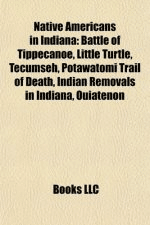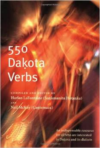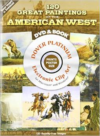Description
Please note that the content of this book primarily consists of articles available from Wikipedia or other free sources online. Pages: 100. Chapters: Native American history of Indiana, Native American tribes in Indiana, Potawatomi people, Kickapoo people, Battle of Tippecanoe, Little Turtle, Miami people, Pontiac’s War, Tecumseh, Shawnee, Fort Ancient, Anishinaabe, Potawatomi Trail of Death, Tecumseh’s War, Indian removals in Indiana, Angel Mounds, Ouiatenon, Tecumseh’s Confederacy, Treaty of St. Mary’s, Caborn-Welborn culture, Shabbona, Winamac, Fall Creek Massacre, Black Partridge, Main Poc, Tenskwatawa, Shick Shack, Chief Gomo, Five Medals, Treaty of Fort Wayne, Pacanne, Buckongahelas, Senachwine, Illinois Confederation, Simon Pokagon, Laura Spurr, Benjamin Petit, Billy Caldwell, Woody Crumbo, Wea, Sauk Trail, Baw Beese, Pokagon Band of Potawatomi Indians, Terri Crawford Hansen, Leopold Pokagon, Treaty of Tippecanoe, George Winter, Chief Comas, Waubonsie, Chief Menominee, Treaty of Grouseland, Piankeshaw, Oliver Phase, Senachewine, Tacumwah, Le Gris, Treaty of Vincennes, Western Confederacy, Anthony Deydier, Mounds State Park, Treaty of Mississinwas, Papakeecha, Shavehead, Nanfan Treaty, Hovey Lake-Klein Archeological Site, Lake Maxinkuckee, Wawasee, Wabash Confederacy, Watseka, Upper Mississippian culture, Cold Foot, Match-E-Be-Nash-She-Wish, Metea, Ashworth Archaeological Site, Welborn Village Archeological Site, Mecosta, Stone Eater, Ma-Ko-Ko-Mo, Eel River tribe. Excerpt: Pontiac’s War or Pontiac’s Rebellion was a war that was launched in 1763 by a loose confederation of elements of Native American tribes primarily from the Great Lakes region, the Illinois Country, and Ohio Country who were dissatisfied with British postwar policies in the Great Lakes region after the British victory in the French and Indian War (1754-1763). Warriors from numerous tribes joined the uprising in an effort to drive British soldiers and settlers out of the region. The war is ….






Reviews
There are no reviews yet.